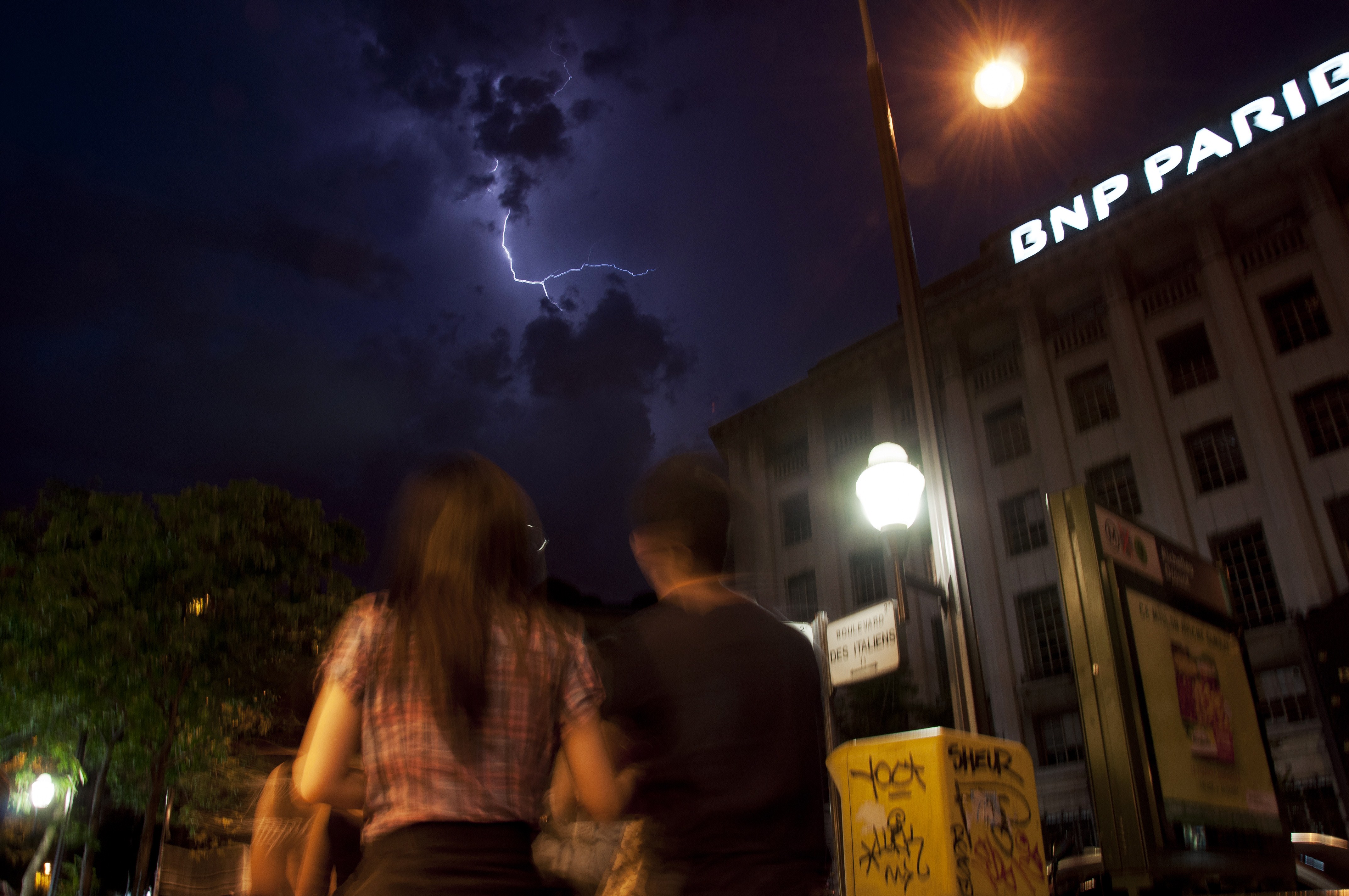- On Sunday, lightning hit a man in Clearwater Beach, Florida. He went into cardiac arrest and was transported to the hospital in critical condition.
- Seven other people were injured in the lightning strike as well.
- A person who gets struck by lightning can suffer third degree burns and ruptured ear drums, and their heart is at risk of stopping.
- Visit Business Insider’s homepage for more stories.
On Sunday, as beach-goers in Florida were enjoying a warm afternoon, a thunderstorm rolled in.
A bolt of lightning struck the sand on Clearwater Beach around 12:42 in the afternoon.
A man in his 40s, whose identity has not been released, took a direct hit. Seven other people nearby were thrown from their feet and injured.
“It was this big strike. This dude, he got struck by lightning and he fell,” witness Kenijah Everson told ABC affiliate WFTS Tampa Bay.
The man went into cardiac arrest. Bystanders performed CPR and dragged him and the other victims off the beach. The man was rushed to a nearby hospital and is currently in critical condition. One of the injured survivors was also treated for burns, WFTS reported.
According to the National Oceanic and Atmospheric Administration (NOAA), the odds of getting hit by lightning in a given year is 1 in 700,000. About 10% of victims die; lightning killed almost 3,696 Americans between 1959 and 2003.
Most survivors of a lightning strike, however, experience long-term effects, including severe burns, brain damage, deafness, and memory loss. Here's what happens if you get hit by lightning.
Lightning strikes sear clothing, scar skin, and deafen ears
A lot can happen in the three-thousandths of a second it takes for a lightning bolt to course through your body.
As the lightning strikes then exits your body, your hair and clothing might singe or catch fire, and possibly even disintegrate.
Read More: The most terrifying part about getting struck by lightning is what happens to you afterwards
If you happen to be wearing metal objects, like a necklace, those items can channel the electric current and sear your skin with third-degree burns.
Lightning that exits the body through the feet can literally knock your shoes off. (According to the National Weather Service, the explosive force of lightning can cause blunt trauma resulting in fractures or soft-tissue injuries.)
It's also not uncommon for the blast to rupture the eardrums, possibly leading to hearing loss.
What's more, blood vessels burst due to the electric discharge, and the heat can create a scarring pattern called a Lichtenberg figure on the skin (though it's rare). These scars branch out across one's body like the limbs of a tree, tracing the path the electricity took as it traveled.

Lightning carries between 1 to 10 billion joules of energy - enough to power a 100-watt bulb for at least three months. When that amount of electricity enters your body, it short-circuits the small electrical signals that keep your heart, lungs, and nervous system running.
That disruption in your heart's electrical rhythm can result in cardiac arrest - one of the leading causes of death in lightning strike victims. The shock can also cause seizures or make it difficult to breathe. If the electric current enters your skull, it can cook your brain, resulting in brain damage or coma.
A lightning strike can cause temporary or permanent paralysis as well. In the wake of a strike, some survivors undergo personality changes, mood swings, and memory loss.
Denver's 5280 magazine interviewed multiple lightning strike survivors in 2013; one of those survivors, Betsy Smith, was temporarily paralyzed after she was hit by lightning on a rock ledge in Wyoming.
"I was convinced my body had become soup inside my clothes," Smith told 5280. She was immobile for 45 minutes after the strike, and her left arm was severely burned. One of Smith's fingers was burned so severely that the flesh died, and the finger had to be amputated.
Five times hotter than the surface of the sun
Lightning forms as the result of particles of rain and ice bumping together inside a cloud.
This can cause an excess of negative charge to collect at the bottom of the cloud. The charge can be so powerful that it repels electrons (negatively charged particles) on the ground below.
The ground consequently becomes positively charged, and an intense attraction builds between the negative cloud and the positive ground. This attraction entices the negatively charged electrons at the bottom of the cloud to branch toward the Earth's surface. That negative stream is met by a stream of positively-charged particles flying skyward.

When that happens, the opposing streams of particles exchange energy, which manifests as the bright lightning strikes we see.
Lightning strikes can be up to 5 miles long from end to end, and they can heat the surrounding air to a temperature of nearly 50,000 degrees Fahrenheit (27,700 degrees Celsius) - around five times hotter than the surface of the sun.
How to avoid lightning strikes
According to John Jensenius, a lightning-safety specialist with NOAA, the best way to stay safe during a thunderstorm is to shelter inside a car or enclosed building. If that's not an option, you should find another way to avoid getting caught out in the open, Jensenius previously told Business Insider.
Avoid standing under trees, and stay away from wet and metal objects, Jensenius added. Even wet sand can effectively conduct the electrical current from a lightning strike.

Jensenius added that it's important to wait 30 minutes after the last rumble of thunder before leaving your place of shelter, since ground strikes can happen even when the skies have cleared and the center of a thunderstorm is 10 miles (16 kilometers) away.

